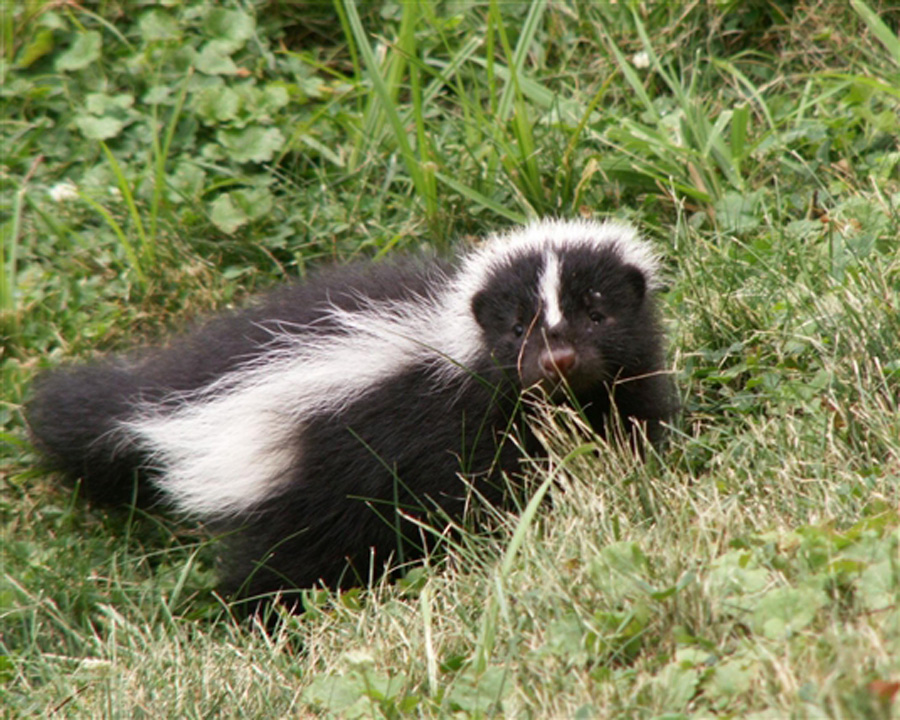Presented By McDonald’s, I’m Lovin’ It!
(ODNR) — Skunks are known to everyone by sight, smell, and reputation. They are found in every county of Ohio as well as throughout the United States.
Pioneers found the striped skunk (Mephitis mephitis) when they came to Ohio, although skunk numbers are far greater now. Skunks are most abundant in rural Ohio where there are farms with fencerows, forest edges and old fields. They are also found in urban areas.
Skunks are known for their ability to spray musk when threatened. They can spray with great accuracy up to 15 feet.
Skunks mate in Ohio in late February and continue through March. Females are in heat for four to five days and will typically mate several times during this period. Males tend to be a bit promiscuous and will move from den to den mating with females.
Litters tend to be from 2 to 10 young which are born pink-skinned and blind. By the second week they are furred and by the third week their eyes have opened. By the sixth week they are weaned and will be out and about with their mother on nightly hunting forays. This family will stay together until the next spring when the young will go off on their own.
Striped skunks are highly adaptable and occupy a wide variety of habitats in Ohio from rural areas to the suburbs. It is this adaptability which accounts for their numbers growing stronger as civilization and humans encroached. They are omnivorous, but their favorite foods include insects, small mammals, fish, crustaceans, fruits, grasses, leaves, buds, grains, nuts, and carrion.
Although not true hibernators, skunks store quantities of body fat in the fall. When the weather gets cold they will retreat to protective dens where they might remain for several weeks or a month at a time. Skunks are primarily nocturnal animals and very seldom do they wander around during the daytime. They will occupy dens that they have dug or in dens that have been used previously by groundhogs or foxes. These dens may be located beneath buildings, in open fields, on hillsides, or under logs in the woods.
To find a list of Commercial Nuisance Wild Animal Control Operators, go to the provided link for a statewide listing. CLICK HERE:




More Stories
Waverly Students Win FBP Diversity Council Art Contest
Longtime SPVMHC Board Member Honored As Rulon Center Celebrates 5th Anniversary
Local Man Appointed Ohio Volunteer Service Coordinator